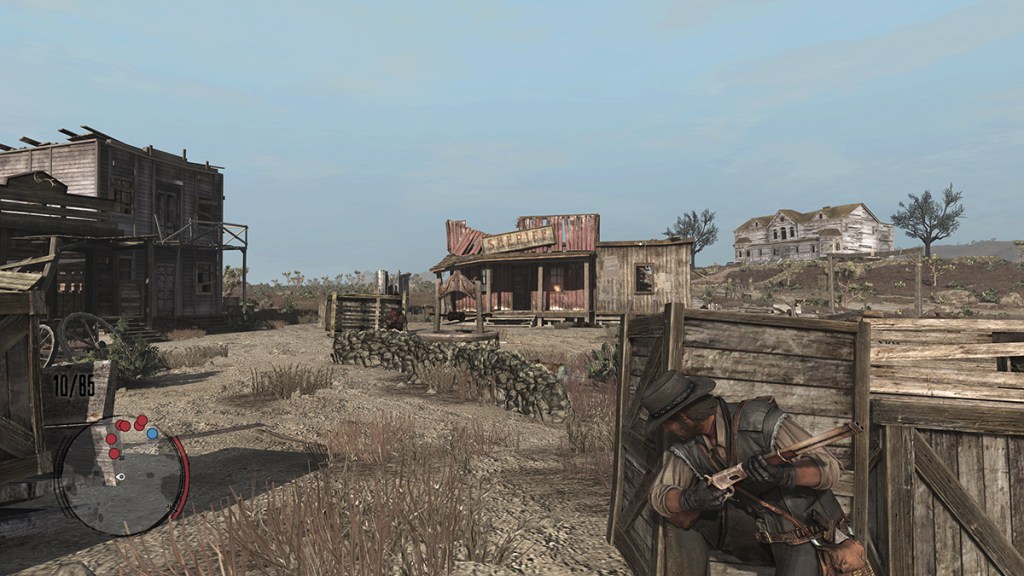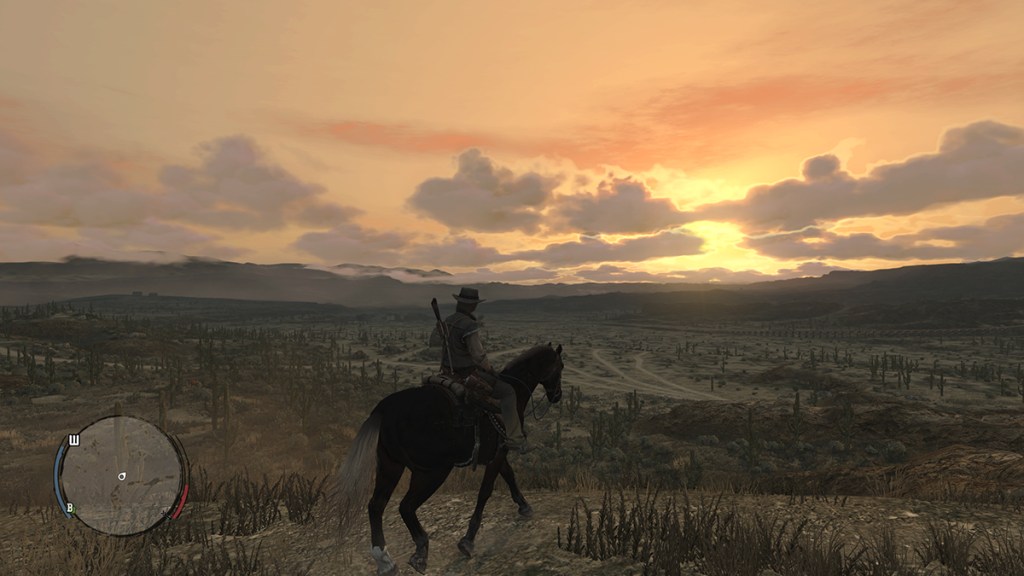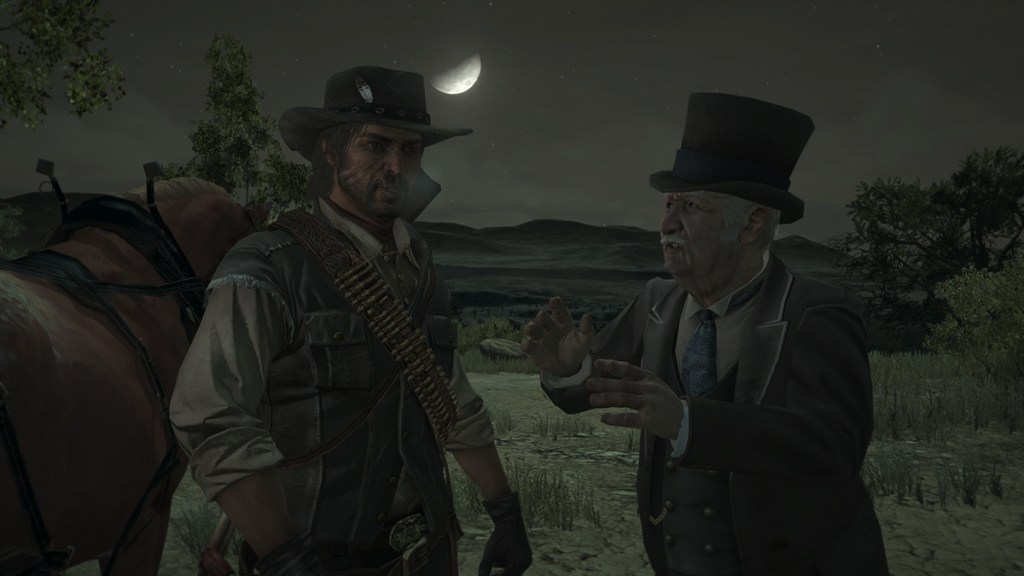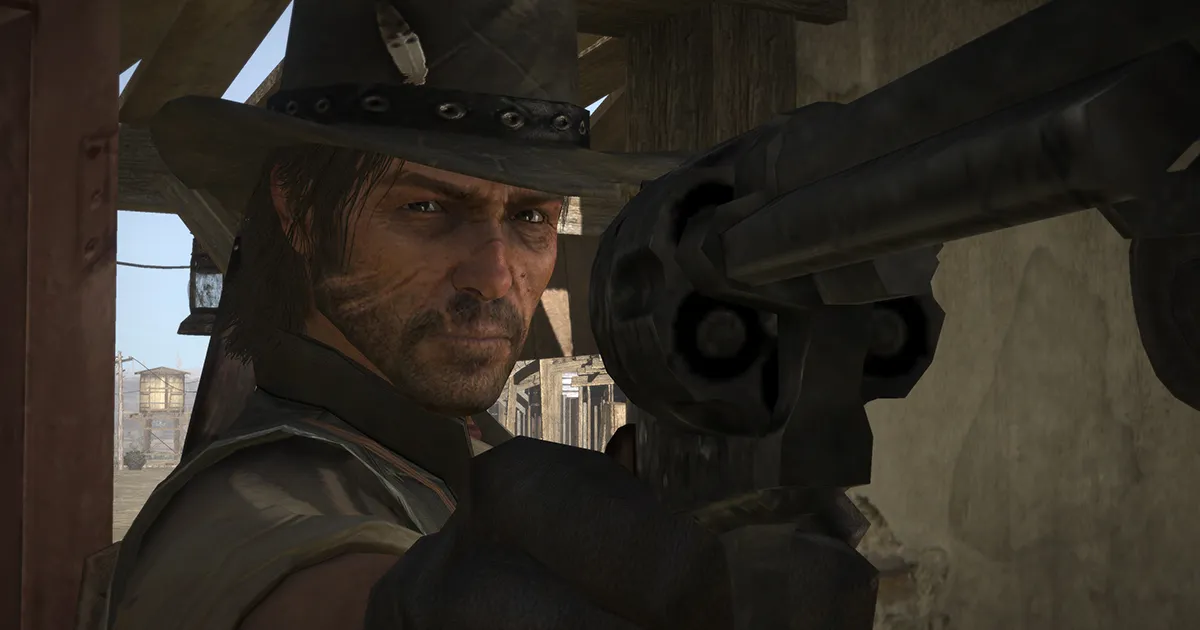Products You May Like
Red Dead Redemption is one of the PS3 era’s best games. But it has been more or less thrown in the county jail and the key has been buried somewhere in the plains of Gaptooth Ridge thanks to the lack of a PC port and Sony’s bumpy backward compatibility support. The recent Red Dead Redemption PS4 port finally frees it from its last-last-gen prison, but there are too many factors that keep it from being the unmitigated success it should be.
This port at least clears the abysmally low bar set by Grand Theft Auto: The Trilogy – The Definitive Edition in 2021. Instead of being a convenient way to relive classics, that janky bundle tarnished Rockstar Games’ reputation with its downgraded visuals and appalling amount of bugs (many of which are still there even after a few patches). Those three games were so pivotal to the entire medium and they were treated like shovelware that had to be ported to keep up a licensing deal.
Red Dead Redemption on PS4 is decidedly not that. It runs smoothly and looks better than the original without sacrificing any of what made the PS3 version special in 2010. This is a faithful port through and through.

However, that’s also part of the problem; it’s essentially a premium upscaling with the absolute bare minimum of features. It does run at 4K on PS4 Pro and PS5, but the texture quality is essentially the exact same and often doesn’t hold up under scrutiny. Noticing the slightly stronger shadows requires zooming in on side-by-side comparisons.
The frame rate is the most egregious example of its technical stagnation because, despite it only outputting at a higher resolution, it still runs at 30 frames per second. Playing a hardly remastered PS3 game from 2010 on PS5 at 30 frames per second is ridiculous and a large factor why it doesn’t feel like a true upgrade.
Rockstar also refused to comment when asked about the possibility of an update that would enable a higher frame rate, too, so there’s no indication this oversight will change. It’s hard to see how this happened because, while not quite the same thing, Digital Foundry was able to run an emulated version of the Xbox 360 port on PC at 60 frames per second without causing too much trouble. Rockstar games often have a heft to them and this bump would undeniably help Red Dead Redemption feel more responsive.
The gameplay and systems are also unchanged. While its mechanics haven’t withered too much since its first release, there are no additional features or accessibility settings to streamline the experience. Getting into and out of the map takes too many button presses. Looking up challenges remains tedious. Being limited to just three save slots and having vestigial options in the menu like enabling autosaves just further show how little this port was adapted for modern systems and sensibilities. There’s not even a half-assed Photo Mode.

Rockstar treating this negligible upgrade as a premium release is staggeringly arrogant, especially since Xbox owners got most of these improvements for free through backward compatibility. And yet, despite all these miniscule tweaks, this port still has value because Red Dead Redemption remains a classic that should be more widely accessible. And this goes a little beyond yanking it from the PS3’s grasp since there are so many aspects of this game that are timeless.
Its atmosphere is nearly unparalleled and outclasses many contemporary titles. A lot of its map is empty plains and mountains, but, unlike many modern open-world games, there’s a deliberate touch to it all. Its ambient soundtrack full of Spaghetti Western-esque music evokes the right mood that beautifully complements strolling through its desolate spaces where encounters are more special because of their relative rarity. The lack of Ubisoft-style icons also cuts down on the noise and makes it all easier to soak in. It’s not a checklist, but a world meant to be lived in, one that doesn’t hit the simulation and animation-heavy extremes of its follow-up.

Red Dead Redemption also has some of Rockstar’s most elegant writing and is full of well-realized characters with silver tongues. Protagonist John Marston, being a quick-witted man try to reform his life who beautifully balances his capacity for compassion and strength, is the clearest example of this. And while fade-to-black transitions are dated, cutscenes are remarkably constructed with lively characters and excellent cinematography that bring each scene to life. Animation technology has progressed greatly in the time since, but the numerous detailed mannerisms in Red Dead Redemption’s animations still outclass many modern games despite utilizing lesser horsepower.
The presentation does wonders for its story, but the narrative itself has also held strong in the ensuing 13 years. It overcomes its handful of slow spots to tell a tale with something to say and with themes that haven’t lost their impact. All of this culminates in a beautifully orchestrated ending that the open-world genre hasn’t been able to top. The cowboy’s reign may be over, as the narrative makes clear, but the impact of the finale still stands tall in the medium.
Seeing Red Dead Redemption’s locations essentially get remastered for Red Dead Redemption 2 compounds how much this PS4 re-release underachieves. If this port is the absolute bare minimum, then those sections of Red Dead Redemption 2 demonstrate the other end of the spectrum of what could have been if it got the scope it deserved. The game thrives on its thick atmosphere and having a more modern presentation would likely only boost its best feature. Rockstar instead settled for a bare-bones port knowing it would be good enough, and, while technically and frustratingly true, Red Dead Redemption deserves more than “good enough.”
Disclaimer: This Red Dead Redemption feature is based on a PS4 copy provided by the publisher. Played on version 1.02.
